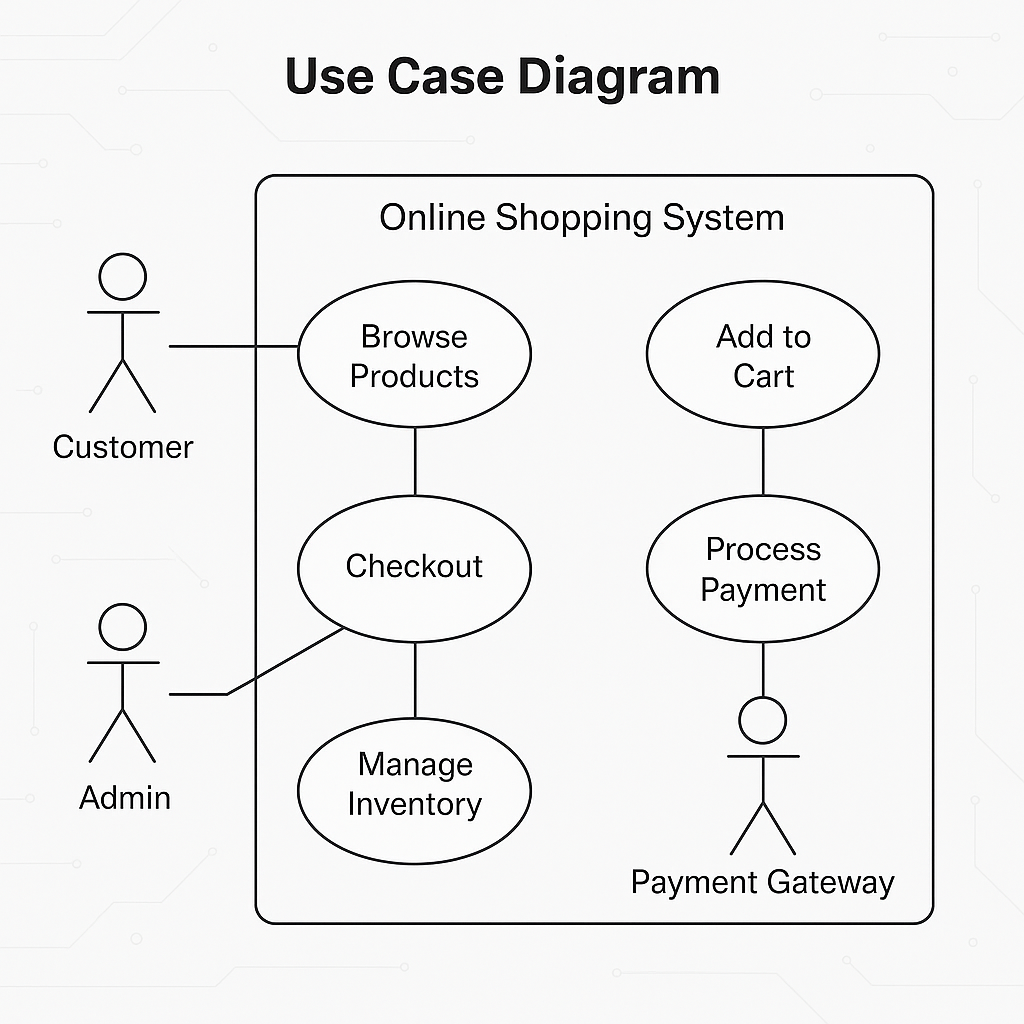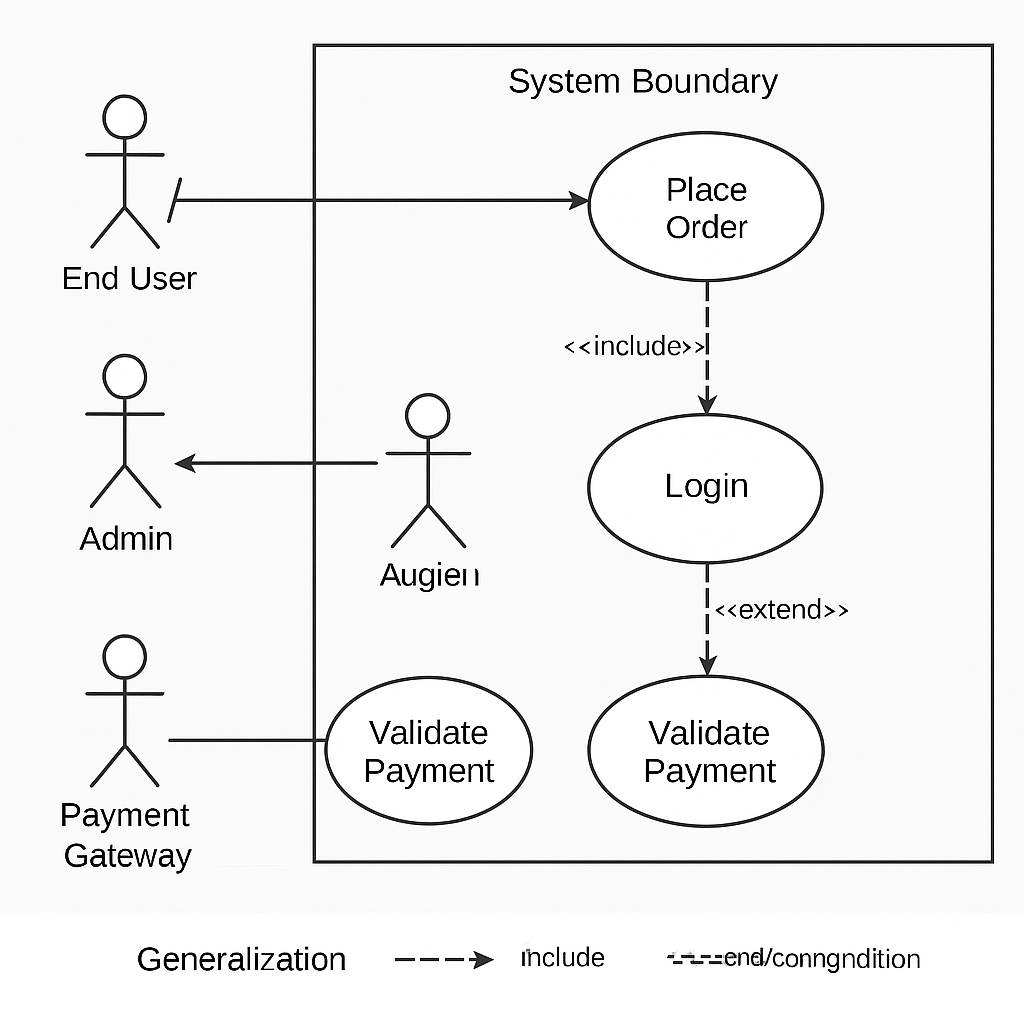Use Case Diagrams: Showing Actors and Goals
A Use Case Diagram is one of the most widely used diagrams in UML (Unified Modeling Language). It visually represents the interactions between actors (external entities) and the system under design, focusing on the goals (use cases) rather than implementation details.

Key Elements of Use Case Diagrams
1. Actors
- Represent external entities interacting with the system.
- Can be:
- Humans: End-users, administrators.
- Systems: Payment gateway, external API.
- Depiction: Stick figure.
2. Use Cases
- Represent functions or goals the system provides to actors.
- Depiction: Ovals with descriptive names.
- Examples:
Login,Place Order,Generate Report.
3. System Boundary
- A rectangle enclosing all use cases.
- Defines what functionality belongs to the system vs. external interactions.

4. Relationships
- Association (line): Actor ↔ Use case interaction.
- Include: One use case always calls another (mandatory behavior).
- Extend: Optional/conditional use case adds behavior.
- Generalization: Inheritance relationship between actors or between use cases.
Example Scenario: Online Shopping System
- Actors: Customer, Admin, Payment Gateway.
- Use Cases:
Browse Items,Place Order,Make Payment,Update Catalog. - System Boundary: Defines that browsing, ordering, and payments are part of the system.
- Relationships:
Place OrderincludesMake Payment.Adminis a specialized actor (generalization) ofUser.
Why Use Case Diagrams?
- Interview Relevance: Helps explain system requirements clearly during system design discussions.
- Requirement Gathering: Aligns developers and stakeholders on goals.
- Abstraction: Focuses on "what" the system does, not "how".
Quick Tips
- Use descriptive names for use cases (
Login, notEnter username and password). - Keep diagrams simple and high-level.
- Combine with sequence diagrams for detailed interactions.
Further Reading
- Head First Object-Oriented Analysis & Design (Brett McLaughlin, Gary Pollice, Dave West).
- UML official specification by OMG.
- Online UML tools like Lucidchart, PlantUML, or Visual Paradigm.